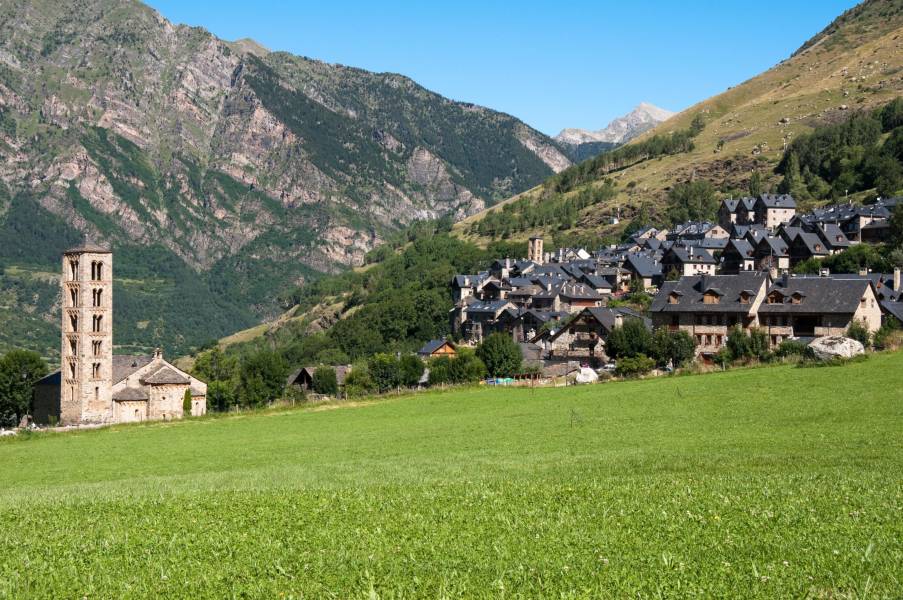The Medieval past of La Vall de Boí, a step away from your holiday cottage
The history of La Vall de Boí begins in the
9th century , with the first Christian counties and kingdoms of the Pyrenees, populated by a remarkable
diversity , coming from the
Basco-Pyrenean area and Romanized Hispania.The Vall de Boí passed into the hands of the
county of Ribagorça , from this to that of
Pallars (XI century) and in the s.
XII, to the
Crown of Aragon .
It was a
disputed valley , since during the Middle Ages, it experienced situations of dispute due to marriages between the counties, the inheritances left to the children and the pacts made between members of different counties. But, in addition, as if that were not enough, the churches of the valley also found themselves in the middle of conflicts between the Bishopric of Roda and the Bishopric of
Urgell, to whom they belonged from the beginning until they left ascribe to the Bishopric of Roda in the sX
The Boí Valley, a Valley full of places to visit during your stay in a holiday cottage
The Boí Valley is much more than a municipality, as it is made up of a set of valleys and mountain ranges that stretch from the Barravés Valley to the Fosca Valley. All the towns in the valley convey a great medieval past , especially if we look at the abundant churches that adorn the territory and that at one time served as watchtowers during the war conflicts. Taking a tour of the Valley and approaching some of these works of art is taking a tour of the history of the region and of Romanesque art , if we bear in mind that the representation in this valley is of the most precious in all of Europe.
Examples of these churches are Cóll (Santa Maria de l'Assumpció), Cardet (Santa Maria), Barruera (Sant Feliu), Durro (hermitage of Sant Quirc and church of the Nativity), Erill la Vall (church of Santa Eulàlia), Boí (church of Sant Joan) and Taüll (churches of Sant Climent and Santa Maria).
We also highlight some imposing historic centers such as the ensembles found in Erill la Vall, Cardet, Cóll, Durro, Boí and Barruera, which have the particularity of being very small towns that are easy to explore on foot.
A range of activities close to your holiday cottage
Another great incentive of the Vall de Boí is the spa of Caldes de Boí, where the thermal waters spring from 37 springs of various mineral-medicinal composition. Its privileged location allows the visitor to enjoy a magnificent mountain and forest landscape of Barruera and a wonderful perspective of the National Park of Aigüestortes and Estany de Sant Climent.
If you are a sports lover, you won't know where to start enjoying them in La Vall de Boí, as the offer is huge. During the warmer seasons, you can practice hiking, free climbing, canyoning, horse riding, paragliding , while in winter, you can enjoy dog sledding, snowshoeing or skiing at the Boí station -Taüll , where you will find the highest skiable elevation of the Catalan Pyrenees.
